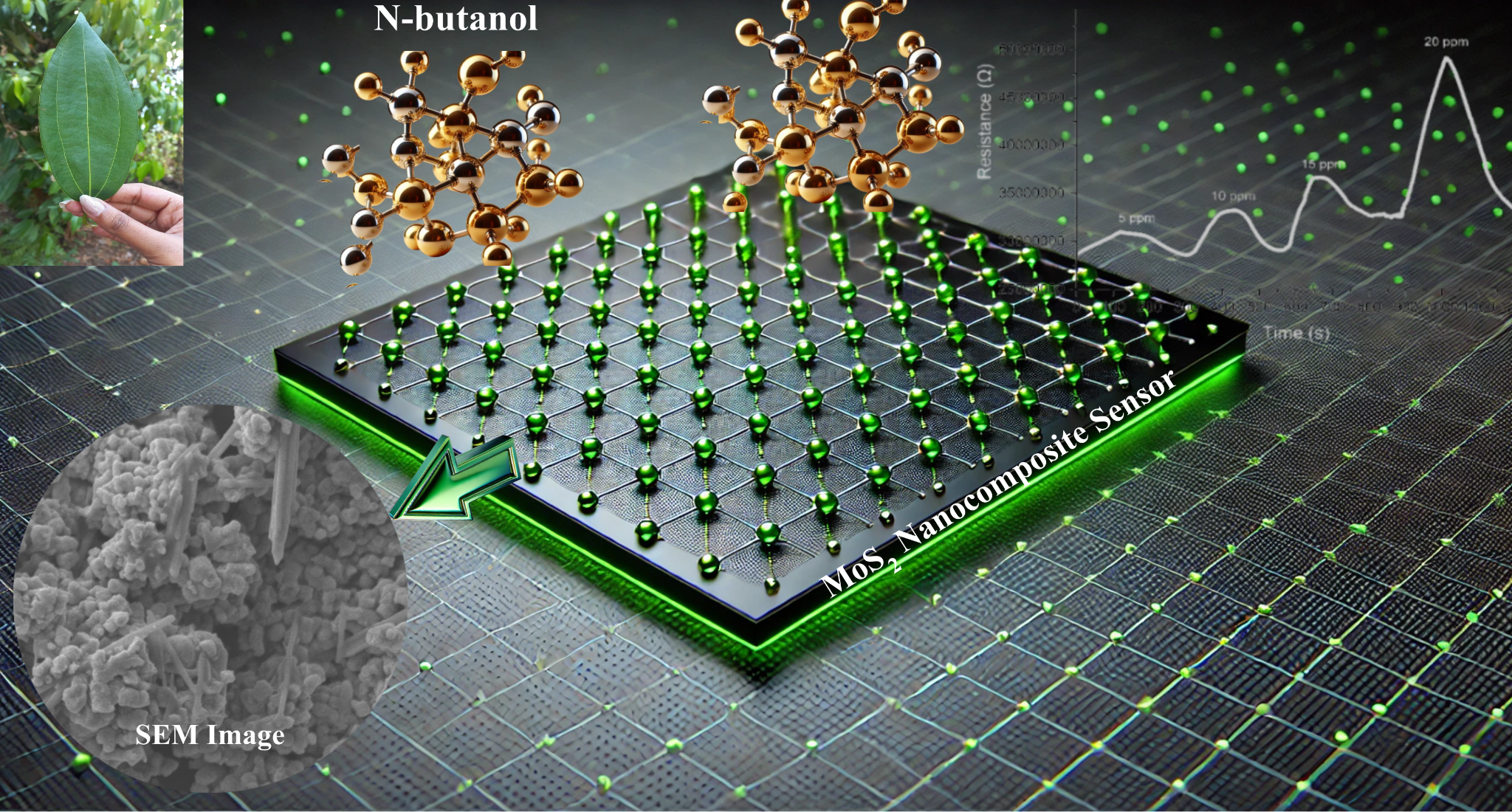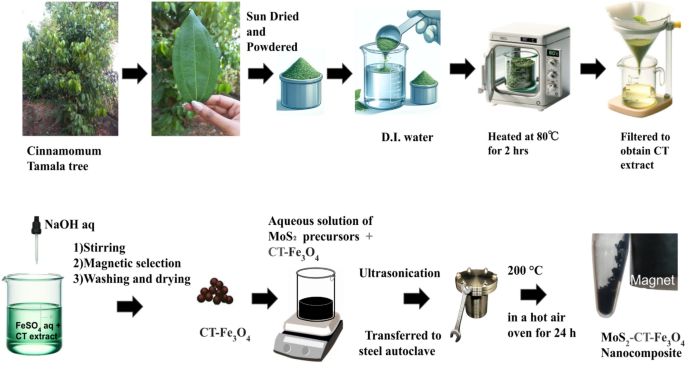Green Solutions for Gas Detection: Molybdenum Disulfide Nanocomposite Sensor for N-butanol Sensing at Room Temperature
Published in Materials

Recently, a study conducted by Ruchika Thayil and Saidi Reddy Parne titled “Biofunctionalized Magnetic Nanoparticles Incorporated MoS₂ Nanocomposite for Enhanced N-butanol Sensing at Room Temperature,” highlights an approach that used plant extract Cinnamomum Tamala for the synthesis of MoS₂ nanocomposite for room temperature n-butanol sensing. Traditional gas sensors often operate at high temperatures, requiring significant energy consumption and poor sensitivity. However, recent advancements in nanoscience have opened the door to the fabrication of highly sensitive sensors capable of functioning at ambient conditions, making them practical for a wide range of industrial applications.
MoS₂: Enhancing Gas Sensing Capabilities at Room Temperature
Among several materials, the most promising materials for development of sensors operating at room temperature are transition metal dichalcogenides (TMDs), particularly molybdenum disulfide (MoS₂). TMDs have gained significant attention due to their unique structural and physical characteristics, such as their large surface areas, chemical durability, and semiconducting properties. MoS₂ stands out for its stability and exceptional gas-sensing capabilities, providing a highly efficient platform for detecting hazardous gases even at room temperature.
The increasing demand for accurate and efficient toxic gas detection systems, coupled with the need for low-power, room-temperature operation, has driven extensive research into next-generation gas sensors.
Unlocking Green Nanoparticle Synthesis
The CT leaf is a well-known Indian spice called “Indian bay leaf” or “tejpatta” and has been well-known for its antibacterial properties. The CT leaf extract (aqueous) is composed of eugenol (as a main ingredient) and kaempferol in addition to many flavonoids, which include different coordinating groups like carbonyl and hydroxyl; hence, this extract has been used as a surface modifier and also as a reducing agent for reducing metal ions in nanoparticle synthesis. The authors highlight that using leaf extracts in nanomaterial synthesis provides a green, cost-effective, and sustainable approach.
Chemiresistive Gas Sensors
Chemiresistive gas sensors stand out for their exceptional ability to detect gases at ultra-low concentrations, making them indispensable in industrial safety and environmental monitoring. Operating on the principle of translating gas exposure into a dynamic shift in electrical resistance, they offer a brilliantly simple yet powerful detection mechanism. Not only are these sensors highly affordable and easy to fabricate, but they also require minimal sensing material, keeping production costs remarkably low. Morphology plays an essential role in improving the sensing ability by increasing the availability of reactive sites, which is crucial for sensing applications. In essence, the physical and chemical properties arising from the material's morphology are key determinants of its gas-sensing performance. Chemiresistive sensors, due to its affordability, simplicity, and high performance, have become vital tools in ensuring safety and environmental protection, merging practicality with innovation.
N-butanol Sensing Application
N-butanol, a colorless and flammable liquid commonly used in industrial applications, poses a significant health and safety risk. Its fumes are toxic when inhaled, and exposure to high concentrations can lead to various adverse effects, including headaches, respiratory issues, and even more severe long-term health problems. Consequently, monitoring and detecting n-butanol in environments like chemical plants, manufacturing units, and laboratories is essential to ensure worker safety and prevent environmental contamination.
Performance of Biosynthesized MoS2 Nanocomposite
Biofunctionalized magnetic nanoparticles combined with MoS₂ were developed for room temperature detection of n-butanol gas. The magnetite nanoparticles were synthesized using the CT leaf extract, and the resulting nanocomposite was produced via a hydrothermal process. The sensors built from MoS₂-CT-Fe₃O₄ nanocomposite demonstrated enhanced performance in detecting n-butanol gas, highlighting the significant improvement over pristine MoS₂. This advancement in gas sensing technology offers a promising, sustainable solution for environmental monitoring and industrial applications, showcasing the potential of MoS₂-based nanocomposites for efficient gas detection in real-world scenarios.
Future of Advanced Gas Sensors
Moving forward, the potential applications of this work extend beyond n-butanol detection. Similar nanocomposites could be designed to sense a wide range of hazardous gases, paving the way for smarter, safer industrial environments. Furthermore, the use of biosynthesized materials in sensor technology underscores the importance of sustainable innovation in the field of nanotechnology, encouraging further research into green alternatives for a wide array of applications.
Follow the Topic
-
Scientific Reports

An open access journal publishing original research from across all areas of the natural sciences, psychology, medicine and engineering.
Related Collections
With Collections, you can get published faster and increase your visibility.
Reproductive Health
Publishing Model: Hybrid
Deadline: Mar 30, 2026
Sepsis: Treatment, intervention, mortality
Publishing Model: Open Access
Deadline: Dec 23, 2025

Please sign in or register for FREE
If you are a registered user on Research Communities by Springer Nature, please sign in